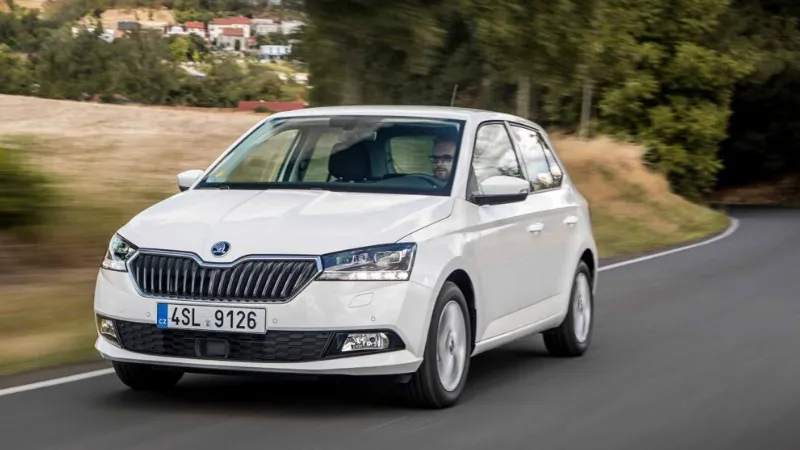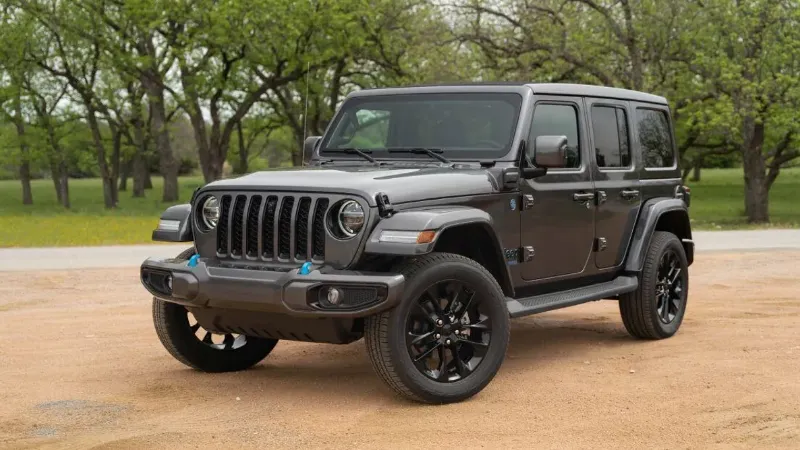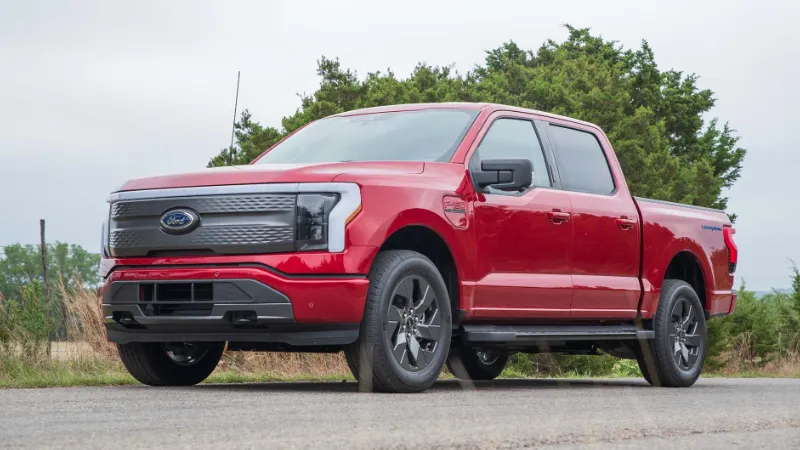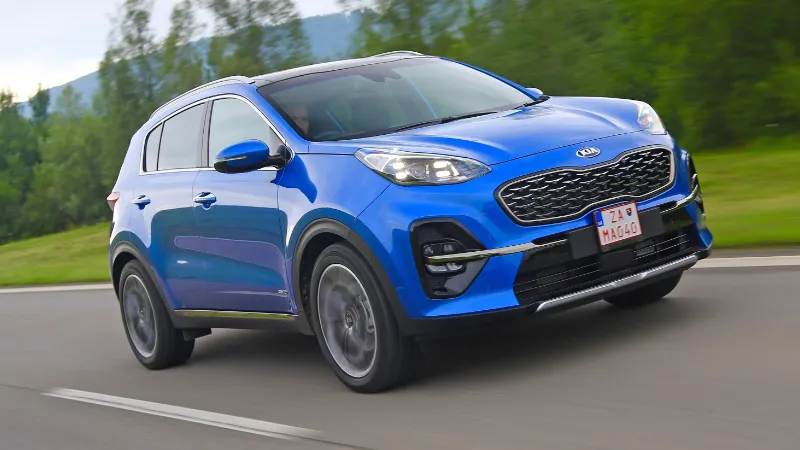Numerous typical factors may account for your high rates if your auto insurance is excessively expensive. So, let’s read on to find out “why is car insurance so expensive”.
Your age, driving history, credit history, coverage options, the vehicle you drive, and where you live are all common factors that affect insurance rates.
Car insurance rates will rise as a result of anything the insurers can tie to a higher chance that you’ll get into an accident and file a claim.
Factors That Can Make Car Insurance Expensive
Based on their assessment of each driver’s likelihood of filing a claim and the likely cost of that claim, insurance companies determine each driver’s rate. Your rates will increase if your insurer determines that you are likely to file a claim. Here are some of the most frequent explanations for why some drivers pay so much for auto insurance, though insurers take many factors into account when determining rates. Explore the answer:
Your Insurance Company
Even though it might seem obvious, insurance rates drastically vary between insurance providers. If you purchase a policy from a pricey insurer, you may be paying much more than necessary.
For a good driver, the top 10 insurers in the country charge an average of $438 for six months of basic insurance. Nevertheless, the same driver may pay as little as $309 to State Farm or as much as $625 to Allstate for insurance. The cost for that driver would drop by 51% if they switched from Allstate to State Farm.
A free online insurance quote can help you compare prices from different insurance providers, which is the only way to ensure you’re getting the best deal possible.
Your Age (and Your Gender)
The cost of auto insurance is significantly higher for young drivers than it is for older drivers; it is 4.5 times more expensive for young drivers than it is for adults in their mid-30s. Young drivers are statistically more likely to be involved in car accidents that result in high claims costs for insurers, which is the main cause of these high rates.
Particularly young men are more likely to pay high premiums for auto insurance. A man in his 20s pays roughly 16% more than a woman in her 20s. As drivers get older, the difference becomes less significant, and older women actually pay a little bit more than men their own age—even if it’s only a few dollars a month.
How to save: Sharing a policy with an elderly family member is one of the best ways for young drivers to reduce their premiums. Your overall insurance costs could drop by 58% as a result of doing this. Younger drivers may also be eligible for good student discounts or may lower their rates even further by enrolling in additional training programs. Check for What Age Does Car Insurance Go Down?
Where You Live
Across the US, there are huge variations in the price of auto insurance. The most expensive state for auto insurance is Michigan, where residents can anticipate paying six times as much for coverage as those who reside in Maine. The amount of required coverage, the proportion of uninsured drivers, and even the state of a state’s roads can all affect insurance rates.
Even within a state or even a city, insurance premiums can differ. You might pay more if you reside in a neighborhood with a high rate of auto theft or with curvy roads that frequently cause accidents. For instance, the price difference for auto insurance in San Francisco between the two ZIP codes with the lowest and highest premiums is $618 annually.
How to save: To get a better deal on your car insurance, we don’t necessarily advise relocating to a new neighborhood, city, or country. However, if you’re already considering moving, it may be worthwhile to obtain a few representative insurance quotes to learn how rates will vary in your new residence. Read more: Average Cost of Car Insurance

Your Car Insurance Coverage Options
You can anticipate paying more for car insurance as you purchase more of it. In comparison to a policy with liability coverage only, a full coverage policy—which covers comprehensive and collision insurance—has annual premiums that are 170% higher. Full coverage car insurance is a great choice especially choosing car insurances. Your deductible—the amount you must pay out of pocket before your coverage begins—and any collision or comprehensive insurance you have together cover the cost to repair or replace your car if it is damaged.
Policies with low deductibles for comprehensive and collision coverage as well as high liability limits are particularly expensive. A liability-only policy has a yearly cost of $1,053, while a policy like this has a yearly cost of $1,053.
How to save: So long as you are above the legal limit and adhere to any requirements your lender may have, you can easily reduce your limits because you have complete control over the coverage on your policy. However, if you are in an accident, you will be liable for any claim that exceeds your insurance coverage limits.
You may be interested:
Your Driving Record
The cost of car insurance is typically much higher for drivers with recent traffic violations or accidents on their record than for those without any tickets or accidents. Adult drivers who recently caused a collision pay 42% more for auto insurance than those who haven’t had any collisions or moving violations. These drivers are statistically more likely to be involved in a future accident, which explains the disparity in rates.
Because they must obtain SR-22 insurance, those who have been found guilty of a serious traffic infraction, such as DUI, may find that their auto insurance rates have increased. High-risk drivers who purchase this type of insurance must have their insurer submit an SR-22 form, attesting that they have the bare minimum in terms of auto insurance coverages, on their behalf.
How to save: You can take a defensive driving course in some states to lessen the impact of a ticket on your record. Sadly, after a crash, waiting is the only option for lowering your rates.
Your Car
When setting rates, insurers take into account the type of vehicle you drive. Some vehicles have lower rates because they are more likely to keep you safe in an accident than others. A fast or powerful car, however, may encourage aggressive, reckless driving, leading to higher rates.
Smaller cars have surprisingly high insurance costs, while larger, safer vehicles like minivans and small SUVs frequently have the lowest premiums. It’s possible that this is the case because accidents frequently cause more damage to smaller cars.
Cars with the following qualities tend to be more expensive to insure:
- Newer
- Faster/more powerful
- More expensive
- Smaller
How to save: Switching vehicles could result in significant insurance cost savings if you currently drive a car with particularly high rates, such as a luxury car, a convertible, or a muscle car like a Ford Mustang.
Your Credit Score
Drivers with bad credit or no credit history frequently pay more for insurance, and car insurance companies occasionally take your credit score into account when determining your premiums. Similar to other rating factors, drivers with poor credit are statistically more likely than those with good credit to submit an insurance claim, which drives up the cost of their insurance.
However, the use of credit scores to determine auto insurance rates has been outlawed in a number of states, including Massachusetts, California, and Hawaii. If you live in one of these states, your credit score won’t have an impact on your rates.
How to save: Review your credit reports frequently to ensure they are accurate as it’s possible that inaccurate or fictitious entries are lowering your credit score. Paying your credit card and other bills on time is more crucial than anything else, though.
Read about How to Get Car Insurance Before Buying a Car?
Ways to Make Your Car Insurance Less Expensive
You have a number of options to reduce your premium if your auto insurance is too expensive. You can quickly find lower rates by switching to a different insurance carrier or buying policies with lower limits. Maintaining a spotless record and raising your credit score are the best ways to obtain long-term savings, possibly of greater value.
Your Car Insurance May Be Expensive Because of Your Insurer
- Why It Makes Car Insurance Expensive:Insurance companies have different methods for calculating rates, so GEICO might be affordable for your neighbor but costly for you.
- What You Can Do:Find companies offering more affordable rates by comparing quotes from different auto insurance providers.
Different premium calculations used by auto insurance companies can result in wildly different costs for the same coverage limits. You can find the company that offers the cheapest car insurance rates that suit your needs by investing the time and effort in comparing quotes from different carriers. Finding and comparing quotes is fairly easy because the majority of providers let you get quotes online. To obtain the most precise estimate possible, be sure to provide thorough information.
High Coverage Levels May Make Car Insurance Expensive
- Why It Makes Car Insurance Expensive:Your car insurance premium is impacted by the amount of coverage you buy. Your rate increases in price as the limits increase.
- What You Can Do:Review your policy’s limits and the different coverage categories it offers. Reduced limits, a lower deductible, or liability-only insurance are all options you might want to think about.
The amount of coverage you choose will determine your car insurance rates; the higher the deductible, the less expensive your policy will be. Rates may also be influenced by the type of coverage you have. In Colorado, for instance, liability-only insurance is $649 per year, while 100/300/100 limits on full coverage are $1,435. Although liability-only insurance is less expensive, it might not offer enough financial security in the event of an accident.
When determining how much auto insurance you require, it’s critical to consider both cost and coverage. Full coverage insurance is typically advised by MoneyGeek because it protects both you and the other driver’s damages in the event that you are at fault in an accident. However, if you need to cut costs, switching to liability-only insurance can significantly reduce your premiums.
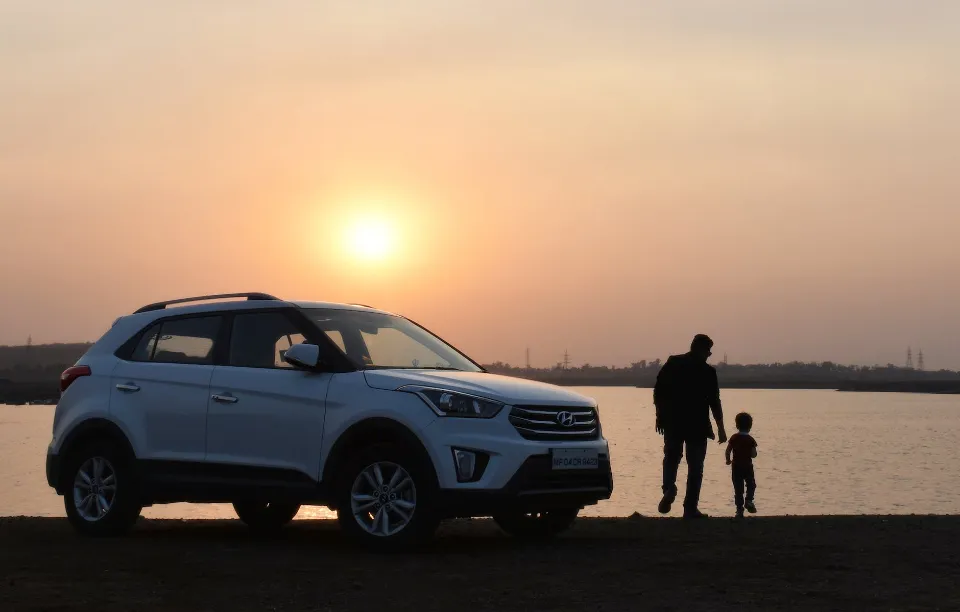
Poor Credit Scores Result in Higher Insurance Rates
- Why It Makes Car Insurance Expensive:When determining rates, auto insurance companies take credit scores into account. Companies charge higher rates for drivers with bad credit because they are more dangerous to insure.
- What You Can Do:To receive lower rates from insurance companies, improve your credit standing.
According to studies, people with good credit use better money management strategies, making them less risky to insure. The majority of states permit insurers to use credit scores in determining premiums, but some, including California, Hawaii, Maryland, Michigan, and Massachusetts, forbid the practice. Paying your bills on time, setting up automatic bill payments, and disputing any discrepancies with your statements are all ways to repair bad credit.
Speaking of Rental Cars, You Pobably Want to Know:
A Bad Driving Record Leads to More Expensive Insurance
- Why It Makes Car Insurance Expensive:Higher auto insurance rates are the result of having traffic violations on your record. Rates are also higher for offenses that are more serious. Drivers with DUIs, for instance, pay higher insurance premiums than those with traffic infractions like speeding.
- What You Can Do:Long-term rate reductions are aided by enhancing your driving record, but you can also try other strategies like taking a defensive driving course or keeping track of your record.
Poor drivers are more expensive to insure, which raises the cost of car insurance. The extent of your violation determines how much your premiums will rise. The typical insurance premium may rise from $1,424 to $1,836 as an illustration. The cost of car insurance increases if you are at fault in an accident, but a DUI conviction results in the highest rates, which average $2,879 per year. Moving violations typically stay on your record for three years on average, though this time frame varies by state.
How does car insurance work? The purpose of having auto insurance is to safeguard your finances in the event of an accident. Auto insurance can assist in paying for repairs to your car and medical care for your injuries if a tree falls on your car or you are the victim of a hit-and-run. It also provides liability coverage, in case you are at fault for an accident that causes injury or property damage to others.
Read about What to Bring When Buying a Car?
Factors That Make Car Insurance Expensive Are Difficult to Change
You have no control over a few things that have a big impact on how much car insurance costs. One of them is your age, as well as your level of driving expertise. Other factors, like the state you live in or the kind of car you drive, might not be worth the effort it takes to change.
Young Drivers Have More Expensive Car Insurance
- Why It Makes Car Insurance Expensive:When determining premiums, providers take into account individual characteristics like age and gender. The cost of your auto insurance is also affected by how long you’ve been driving.
Age and gender both have an impact on auto insurance premiums, with young, inexperienced drivers paying higher rates. Driving is a skill that you can improve at with practice, just like any other. Young drivers are considered to be riskier to insure by insurance companies because they have less experience driving. For similar reasons, insurance companies charge inexperienced male drivers a higher premium than they do inexperienced female drivers. As drivers of both sexes gain experience, the disparity in rates between men and women equalizes.
Certain States and Cities Have Higher Insurance Rates
- Why It Makes Car Insurance Expensive:Despite the fact that the cost of auto insurance is $1,265 on average per year nationwide, each state has a different actual rate. This difference is primarily due to demographics and state-specific regulations.
Each region follows a specific set of insurance laws, resulting in varying car insurance rates in different states. The average full coverage policy in Michigan costs $4,003. The state’s no-fault insurance law and the large number of uninsured drivers are the main causes of this high rate. Due to the state’s high population, motorists in New York pay $3,896 for a policy with comparable coverage. There is a higher chance of injuries or deaths from car accidents in densely populated areas.

Why Do We Need Car Insurance?
Automobiles are pricy products that, while being modern marvels of technology and innovation, have the potential to cause significant harm and injuries. This has been the case since they were first introduced to the market. State governments eventually created mandatory insurance laws to protect all parties involved as a result of the challenges in obtaining reparations.
Under these conditions, drivers pay the insurers a monthly or yearly fee, known as an “insurance premium” in exchange for a specified degree of coverage in case of an accident. We need to consider the different types of coverage in order to comprehend why insurance can be costly.
Liability Coverage
The most popular and frequently required type of insurance is casualty or liability coverage. The most fundamental of policies, it pays for damages for which the insured driver was found to be at fault. Each state has a different minimum coverage requirement, and it is possible to pay a higher premium to increase it.
Car insurance is split into three categories:
- Bodily injury per person
- Bodily injury per accident
- Property damage
The cost of liability insurance can be reasonable (especially for owners of older cars), but you should be aware of its restrictions. In the event of a serious accident, for instance, a low property damage limit may be easily exceeded. To protect yourself from the possibility of a financial hardship if you were to get into an accident, make sure you have enough coverage in each of the three categories. You may want to know: How Long Does It Take to Get Car Insurance?
Full Coverage
Full coverage is a term that is frequently misunderstood and deceptive. It gives drivers a fictitious sense of security. There’s no such thing as “full” coverage, but something close to a form of total protection can be achieved with the right combination of insurance packages.
While liability coverage provides compensation for damages and injuries to an at-fault driver, collision coverage reimburses the costs of repairs. If nature causes damage to your car or if it’s stolen, comprehensive coverageguarantees compensation.
Uninsured and Underinsured Coverage
The insurance provider of the at-fault party is required to pay you monetary damages in the event that another driver caused the collision. Your only option for retaliation, though, would be to file a police report if the driver was uninsured. This might result in a drawn-out and costly legal process.
An estimated 13% of drivers lack insurance, according to the Insurance Information Institute. Suing these drivers for damages would be pointless if you consider the likelihood that they do not have insurance because they cannot afford it.
In light of this reality, insurance companies have packages to protect drivers in those situations:
- Uninsured motorist bodily injury (UMBI)
- Uninsured motorist property damage (UMPD)
- Underinsured motorist bodily injury (UIMBI)
- Underinsured motorist property damage (UIMPD)
You might still need to file a lawsuit to recover the remaining funds if the at-fault driver’s insurance policy isn’t enough to cover your costs. Your insurance provider pays the full amount of the uninsured and underinsured motorist coverages, leaving them to pursue compensation from the at-fault party.
Top Car Rental Reviews:
- Routes Car Rental Reviews
- NU Car Rental Reviews
- Kyte Car Rental Reviews
- Hopper Car Rental Reviews
- Avail Car Rentals Reviews
Loan & Lease Coverage
When a car is totaled in an accident, loan, lease, or GAP coverage can shield drivers from irrational costs. A brand-new car loses, on average, between 10 and 20 percent of its value the moment you buy it. Because of this, you will temporarily owe more money on the car than it is worth. GAP coverage adjusts the value if an accident occurs within that time frame to ensure drivers won’t have to pay out of pocket and to make the costs more accurate.
Questioning how long does GAP insurance last? Maybe you’re curious about your GAP Coverage’s cancellation or refund options. We’ll address all of your GAP Insurance questions in the paragraphs that follow. Read Now!
Will Rates Go Back Down in 2023?
A record-breaking number of insurance companies requested rate increases in 2021 and 2022. However, if some or all of these issues are resolved after a turbulent year marked by inflation, supply chain disruptions, labor shortages, and a return of traffic levels, auto insurance rates may drop. Annual premium changes can be significant or negligible, depending on your state.
The best thing you can do in the interim, even though it’s too soon to make a firm determination, is to look at the personal factors that influence your rate, particularly if you’ve recently had any accidents or citations, are no longer in your teens or 20s, or have improved your credit. You can also review your coverage: could telematics auto insurance save you money if your driving habits have changed? Would raising your liability limit make sense given the rising costs of repairs and vehicles?
Finding an auto insurance policy that satisfies your coverage requirements and saves you money in the face of rising costs globally can be achieved by carefully comparing quotes and taking your time.
Suggested Car Insurance Reviews:


